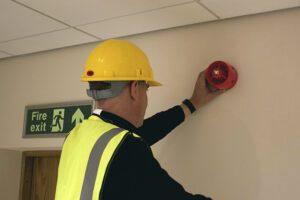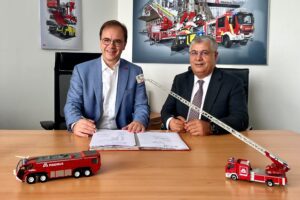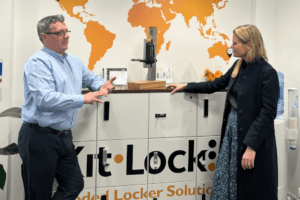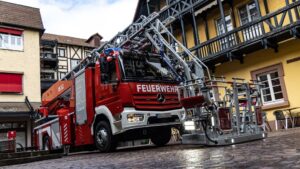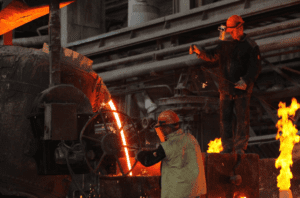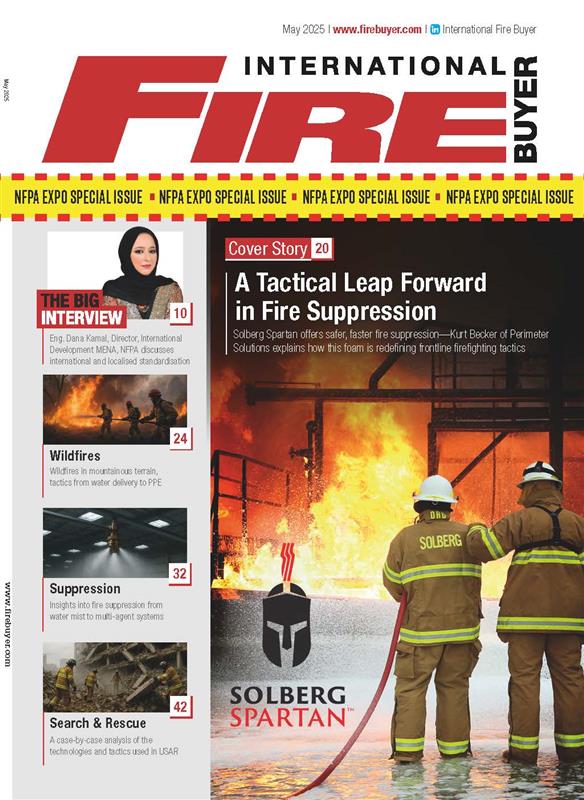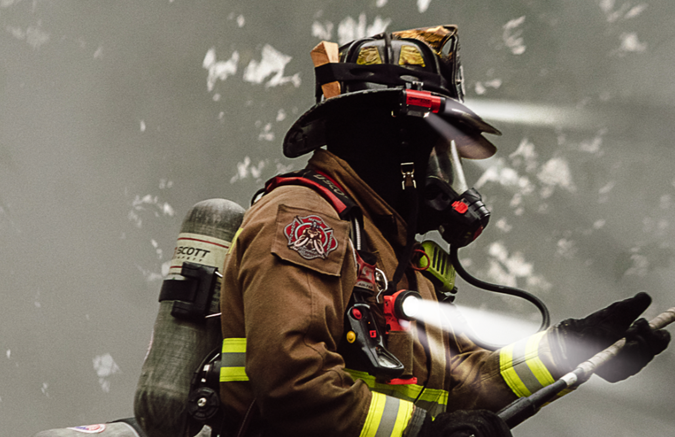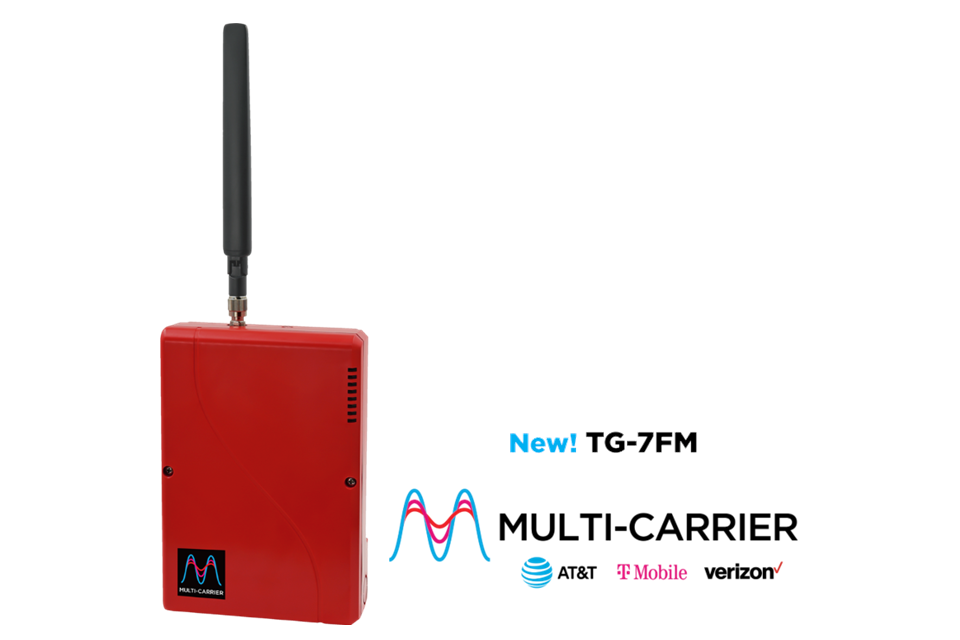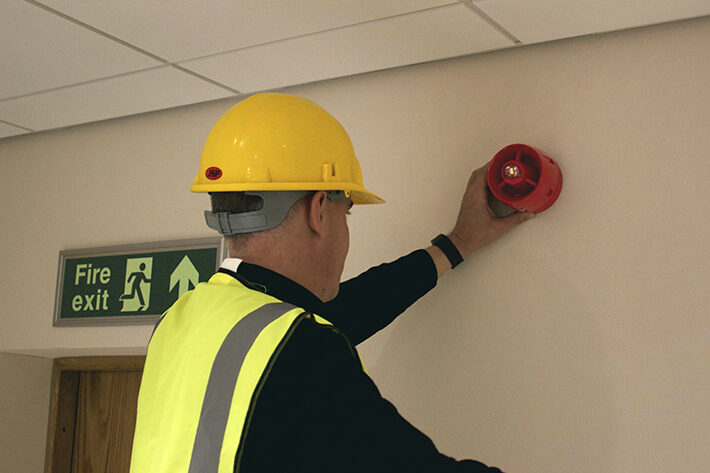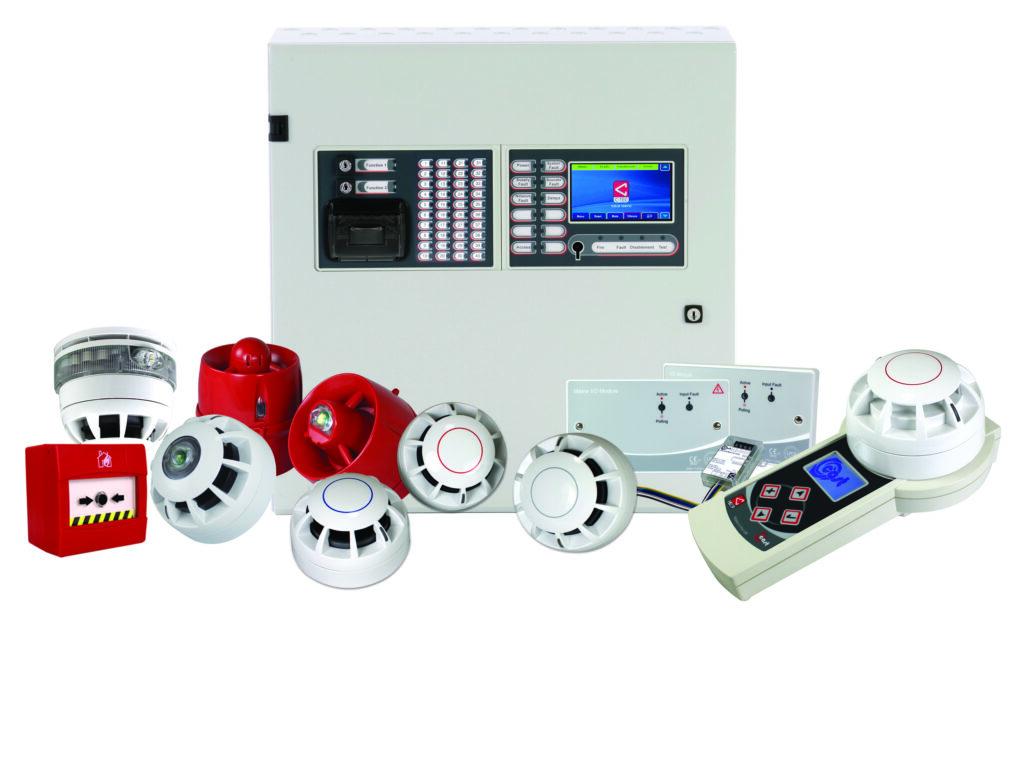Total control of your waterflow
Rebecca Spayne of Fire Buyer sits down with Guy Jackson, Product Director, Godiva to find out more detail about SAMFlows, the advanced waterflow system Can you start by giving us an overview of SAM Flows and its core mission? SAMFlows is an advanced total waterflow system which was developed by a firefighter and engineer who recognised common problems experienced on the fireground and wanted to use technology to alleviate those problems. In doing so, the system improves outcomes, improves safety, improves efficiency and effectiveness of operations and prevents potentially catastrophic mistakes. How does SAMFlows revolutionise fire pump operations compared to traditional methods? With SAMFlows managing water flow from supply through to discharge, the pump operator is freed up to focus on the fireground and the needs of the attack crew rather than focusing on the truck. The system manages supply of water to the pump, whether it be from the tank, hydrant or draft. It manages discharge pressures and the pump pressure required to deliver them. The system manages and delivers different pressures to different discharges, ensures seamless transition between water sources (eg from tank to hydrant) with no interruption to the supply to branch operators. It protects the pump from damage due to loss of pressure, it responds instantly to changes in demand, automatically manages tank level and ensures that as long as supply water is available it gets to where it is needed. What specific features make the SAMFlows system safe, intelligent, and efficient? SAMFlows is constantly monitoring and managing the whole waterflow process. It’s like the difference between driving a manual car with no electronics to driving one with all the driver aids; automatic transmission, power steering, anti lock brakes, lane assist, intelligent cruise control, collision avoidance and automatic emergency braking. As long as you have adequate water supply and have told the system which discharges you want open, SAMFlows will do the rest, delivering the attack crew the pressures they need – no more, no less, responding instantly to changes in demand or supply, looking after the pump, tanks level and the crew. As soon as the PTO is engaged SAMFlows will automatically open the tank to pump valve, prime the pump and begin circulating water, so you are ready to flow water to lines in just a few seconds. As SAMFlows automatically bleeds supply hoses you can change the way you operate, using the energy from the pressure in a hydrant feed by delivering it directly into the eye of the pump, reducing the workload on the engine, PTO and pump. Can you explain how SAMFlows manages water flow and the key components it controls? SAMFlows combines existing proven technology and hardware from the combined portfolio of IDEX Fire & Safety to deliver a fully integrated automated system comprising a Godiva Prima pump with Akron electronically actuated and controlled valves and Class 1 electronics, flowmeters and pressure sensors, all controlled and managed by a central Control Centre touch screen. We call it Total Waterflow Control because it manages everything from the tank to water coming in from an external source, the water in the pump and the water going out through discharges. As the system is continually monitoring every one of these stages with pressure sensors and flow meters it makes the continuous adjustments necessary so that a change in one is supported by the necessary changes in the others. What are the main benefits of using a 11” touch-screen display for pump operations? The main screen, known as the Control Centre, is simply the interface between the user and the SAMFlows management system. Rather than turning handwheels, crank handles or pulling levers to control waterflow, a simple swipe of the touch screen tells the system which discharges you want open and where you want water supply from – SAMFlows does the rest. SAMFlows knows what pressure you want on each discharge and will continually monitor and maintain that pressure so there is no need for the operator to constantly monitor pressure gauges and adjust settings. Inlet, pump and discharge pressure levels are displayed on the screen for information only. The screen itself is an anti-glare, colour, TFT LCD with LED backlight. It is impact resistant, can be operated when wet and with gloved hands and in temperatures from -40 ⁰C to + 70 ⁰C. A second screen, known as the Pump Controller, gives additional functions and display information including manual engine speed control, manual tank fill control, pump ‘health’ information, engine information and the facility to display feeds from external cameras. How does SAMFlows enhance the safety and effectiveness of fire crews on the fireground? SAMFlows enables the pump operator and attack crew to get water flowing and onto the fire faster. It prevents mistakes like overrunning the water supply or missing calls for water. With the ability to supply different pressures to each line, the system allows you to supply higher pressure to an ALP or a branch at elevation without having to overpressure those being used at ground level. As the system continually monitors inlet, pump and discharge pressures and responds instantly to changes in demand and supply if one branch operator is pulsing it does not have a knock-on effect for other branch operators. To read the full article, see our last issue here. Never miss a story… Follow us on: International Fire Buyer @Firebuyer Fire Buyer Media Contact Rebecca Spayne Managing Editor, International Fire Buyer Tel: +44 (0) 1622 823 920 Email: [email protected]
Total control of your waterflow Read More »


